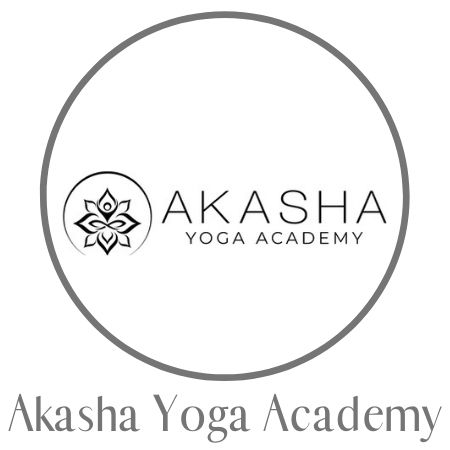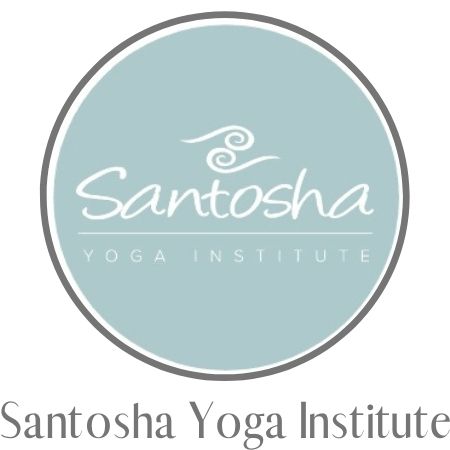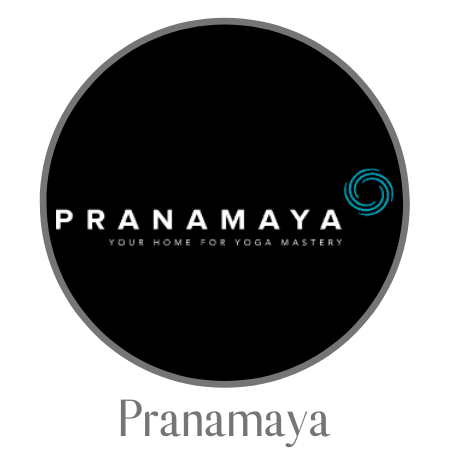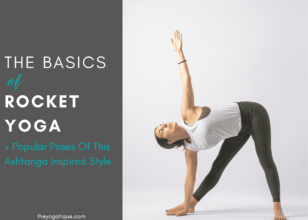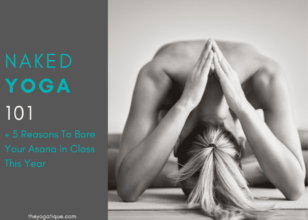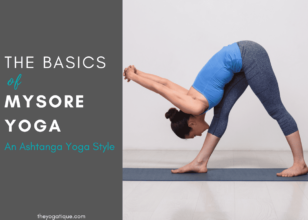Yin Yoga is a slow-paced and gentle style of yoga that uses basic postures to increase mobility. This style stands out due to its emphasis on holding poses for extended periods, often one to five minutes, and it is one of the most popular styles of yoga practiced today.
In contrast to other forms of yoga that focus on muscular engagement and strengthening, Yin Yoga targets the deep connective tissues, including fascia, ligaments, and joints. The connective tissues benefit the most from long, sustained stretches, which makes this yoga practice incredibly effective for improving flexibility and mobility.
In this article, you'll discover the description of Yin yoga plus the benefits and history of this trending type of yoga. You'll also learn what makes Yin yoga different and what actually defines it when compared to Hatha or Vinyasa styles of yoga, which you may be more familiar with.
Article content:
(Click any link to jump directly to section)
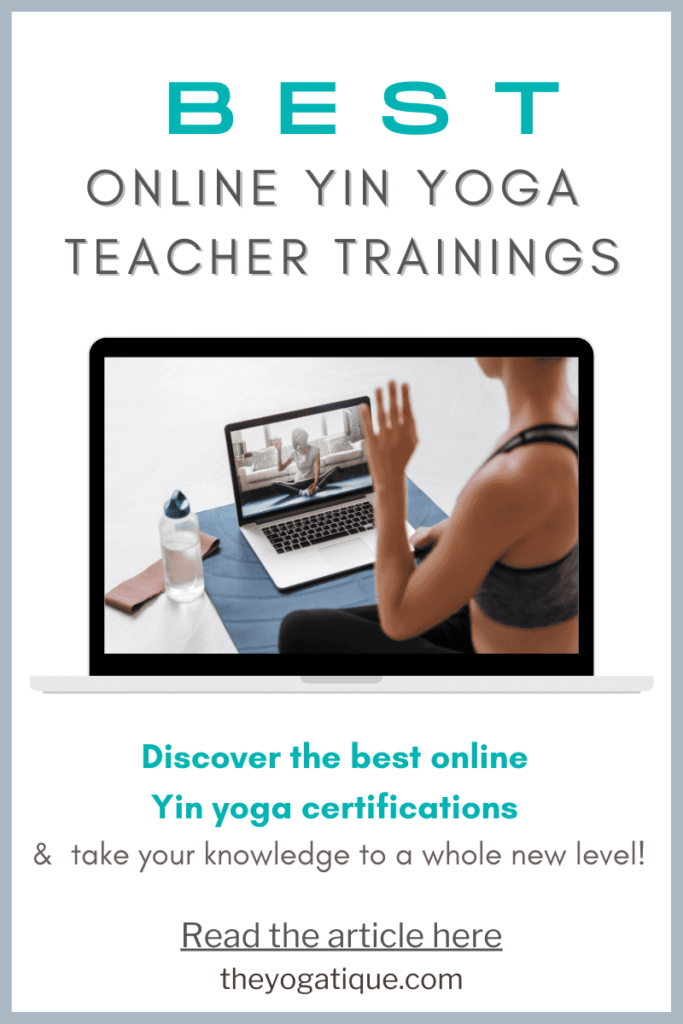
IS YIN YOGA TEACHER TRAINING ON YOUR RADAR?
Online Yin Yoga Teacher Training Offers
- Affordability
- Flexibility
- Certification
- Lifetime access
⬇Click below for the best online Yin yoga teacher trainings to join today⬇
What is the description of Yin Yoga?
Yin yoga is a gentle form of yoga that enables deeper access to the connective tissues and helps release tension in the fascia, which is closely knit to overall flexibility and mobility. Its long holds of yoga postures are defining characteristics of Yin yoga classes.
Yin Yoga is a perfect complement to the dynamic and muscular (yang) styles of yoga, which emphasize internal heat and muscle lengthening and contracting.
Yin Yoga history
Yin Yoga's origins are deeply rooted in ancient Chinese philosophies and Taoist principles. These philosophies believe there are energy pathways in the body, often referred to as meridians, which channel vital life force or “qi.” Balancing and improving the flow of energy through these pathways is a core objective of Yin Yoga. As practitioners hold each posture, they engage in a meditative state, facilitating physical but also mental and emotional well-being.
Integrating ancient Chinese philosophies and Taoist principles into Yin Yoga illustrates how this practice goes beyond physical exercise to address deeper aspects of health and well-being. Dao Yin, an ancient Taoist practice, greatly influenced modern Yin Yoga.
Yin Yoga's founder
Paul Grilley is the pioneer of this yoga style. He merged Dao Yin techniques with Indian Hatha Yoga to create what we now know as Yin Yoga. By blending these traditions, Grilley provided a gateway for practitioners seeking a restorative yoga experience that nurtures both body and mind.
According to Paul, Yin Yoga's unique quality is its restorative nature, which makes it an excellent counterbalance to more vigorous forms of yoga and physical activities.
Paul Grilley also said about Yin, “In general, a yin approach works to promote flexibility in areas often perceived as nonmalleable, especially the hips, pelvis, and lower spine.”
5 benefits of practicing Yin Yoga
One of the most celebrated benefits of Yin Yoga is its ability to enhance circulatory improvement. By holding the same posture for several minutes and often using props, Yin Yoga encourages deeper stretching and increases blood flow to previously stagnant areas. This improves oxygenation in connective tissues, promoting overall health. Here are five more benefits of Yin Yoga:
- Improves flexibility
- Stimulates the layers of fascia
- Stretches the body's ligaments
- Lengthens tendons
- Unblocks meridians
1. Improves flexibility
Yin yoga improves flexibility by focusing on deep, sustained stretches that target the body's connective tissues, such as ligaments, tendons, and fascia. Holding poses for extended periods allows these tissues to gradually lengthen and release tension, enhancing overall flexibility and range of motion. This practice is particularly effective in opening up the hips, lower back, and shoulders, areas where many people commonly experience stiffness.
2. Stimulates the layers of fascia so nutrients can flow more easily
Yin yoga stimulates the layers of fascia by applying gentle, sustained pressure through long-held poses, encouraging the fascia to become more pliable and hydrated. This practice enhances the flow of nutrients and oxygen to the fascia and surrounding tissues, promoting better overall tissue health and recovery. Improved fascia health can lead to reduced pain, increased mobility, and a greater sense of well-being.
3. Stretches the body's ligaments
Yin yoga stretches the body's ligaments by gently holding poses for extended periods, which helps to maintain and improve their plasticity. This prolonged stretching encourages the ligaments to lengthen and adapt, preserving their ability to support and stabilize joints effectively. Maintaining ligament plasticity is crucial for overall joint health and flexibility, reducing the risk of injuries and enhancing physical performance.
4. Lengthens tendons
Yin yoga lengthens tendons by encouraging deep, sustained stretches that gradually extend these connective tissues. This lengthening process helps maintain a dynamic range of motion, allowing joints to move more freely and efficiently. By regularly practicing Yin yoga, the body can preserve and even enhance its flexibility and mobility, contributing to overall physical health and resilience.
5. Unblocks meridians
Yin yoga unblocks meridians by targeting and stimulating specific energy pathways in the body through prolonged holds and mindful stretching. These poses help to release any blockages in the meridians, allowing for the smooth flow of energy, or “Qi,” which is essential for maintaining balance and vitality. By unblocking these pathways, Yin yoga promotes overall wellness and helps prevent physical and emotional imbalances.

↓Great Yin yoga teacher trainings you should look into↓
Why is Yin Yoga so hard?
Bringing the body to stillness makes Yin Yoga challenging for many of us who are used to multitasking all the time. Yin challenges even the most hardcore Vinyasa yogi because sitting in a posture without the distraction of technology might be harder than it sounds!
Another challenge is the physical feelings we face and must work through while marinating in Yin Yoga postures for the long holds that define them. This practice often works on our most troubled areas, which have become extremely tight and stiff over time due to lifestyle factors such as sitting at a desk all day or poor habitual postural habits.
In fact, many might say Yin yoga is the hardest style of yoga, which may contradict what we think when we consider styles like Power yoga.
Yin vs Yang yoga styles
Yin Yoga is all about slowing down and reconnecting with your body, while dynamic (yang) practices like Vinyasa focus on building strength and stamina. Here are the key differences between the Yin and Yang yoga styles:
- Yin: Slow movements that move chi (lifeforce)through the body. Works on connective tissue (ligaments, tendons, and fascia). Characterized by long holds.
- Yang: Ever changing, flowing & moving. Works on the muscles. Breath-to-movement style of yoga.
How Yin Yoga affects the body & mind
On a physical level, Yin Yoga can alleviate chronic pain, particularly in the back, hips, and pelvis. With consistent practice, people often notice reduced stress and tension in these targeted areas.
It also aids in improving circulation, which enhances the body's overall health. Teachers often emphasize the importance of approaching these poses with mindfulness, ensuring that each movement contributes effectively to the practice.
Yin Yoga affects not just the physical body but also deeply impacts the mind. Its meditative nature helps cultivate inner stillness and mental clarity. Focusing on the breath and holding poses for longer periods encourages a state of meditation that calms the mind.
Meditation and calming the mind allow for introspection and mindfulness, leading to a more centered and peaceful state of being. This practice creates a reflective space where the mind can slow down and be present, promoting mental wellness and emotional stability.
Takeaway
I hope you now have a better understanding of Yin Yoga and its benefits. Yin Yoga is a unique form of yoga that promotes flexibility in areas often considered non-malleable, such as the hips, pelvis, and lower spine, by holding postures for several minutes.
This style of yoga is the opposite of flow-based yoga, which is considered Yang because it works on muscles, while Yin yoga works on connective tissue.
FAQ about Yin yoga
What makes Yin yoga unique?
Yin yoga targets our connective tissues – ligaments, joints, bones, and the deep fascia networks of the body and the meridians. This is different compared to Yang yoga practices such as Vinyasa which target the muscles.
What are three benefits of Yin yoga?
While there are many benefits of Yin yoga, here are three. 1. Improves flexibility. 2. Releases fascia and improves joint mobility. 3. Balances the internal organs and improves the flow of chi or prana.
Some online yoga studios, online yoga teacher training programs, and brands that we write about may offer us a small commission should you decide to make a purchase or signup after reading our content. Thank you for enabling us to exist!


